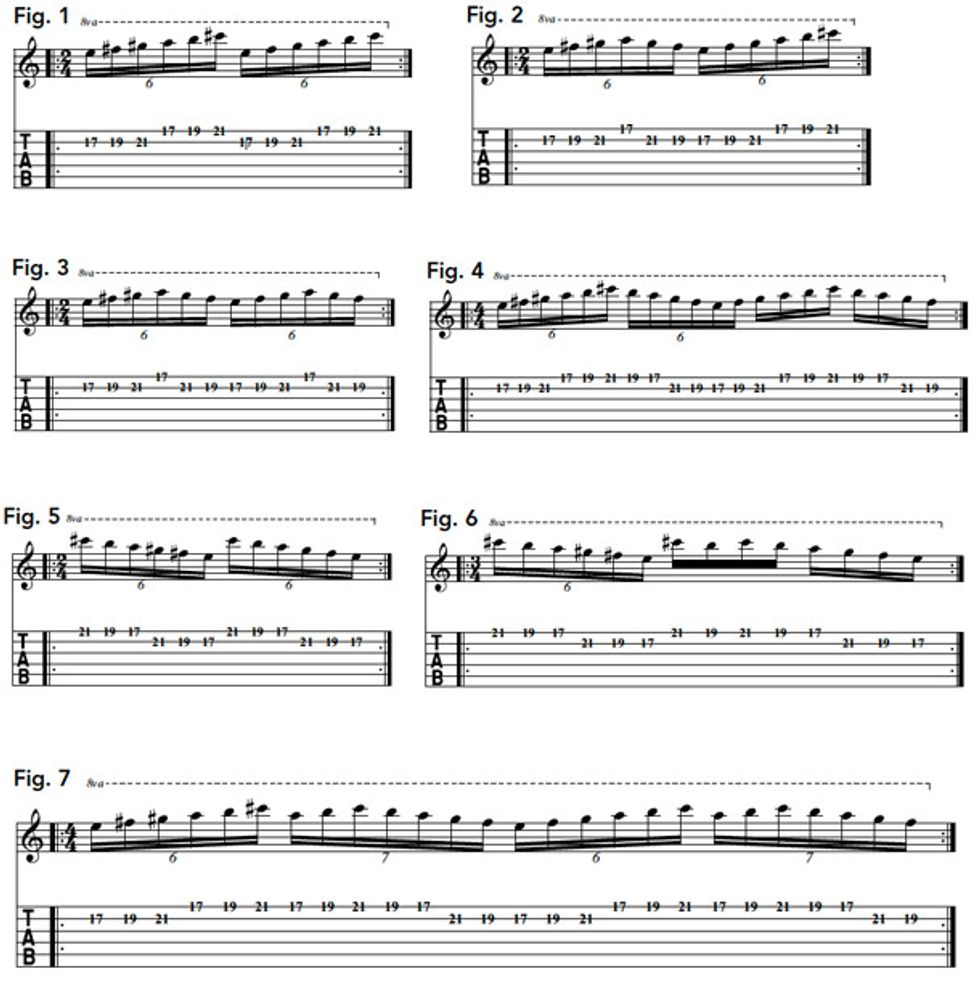This month we’re going to take a look at
what I consider to be some old-school
picking drills. I developed these exercises
when I was studying how Paul Gilbert,
Vinnie Moore, and Shawn Lane approached
the guitar.
All of the examples in this column are in
the key of C# natural minor (C#–D#–E–F#–
G#–A–B) and played with strict alternate
picking. I have narrowed each example
to only two strings because most guitar
players start running into problems when
more strings are involved. We are breaking
everything down to its smallest component
and mastering it from the inside out, so
to speak. In other words, once you master
these examples, adding other strings will
be much easier.

Here are a few pointers:
- Make sure you grip the pick close to the tip
- Don’t move any of the joints in your thumb or fingers
- All of the motion should be with your wrist. However, this will vary a little bit from player to player. For instance, I use a little elbow at times. I have watched all of the fastest pickers and they each do it differently, so don’t get hung up on this.
- The pick should only dig in the actual depth of each string
- Only move enough to cross from one side of the string to the other. Speed comes through economy of motion.
Each example is pretty simple to learn, as they’re all composed of sixteenth-note triplets. A few of them have odd groupings, especially the last two. The last one is groups of 6 and 7 and because of this, each time you start over the picking flips, so watch out for that.
Okay, until next time, keep shredding. If you have any questions, email them to rusty@rustycooley.com. Also, you can check out my new band at www.myspace.com/dayofreckoningmetal, and join my official forum at https://forum.rustycooley.com/.
Rusty Cooley
Rusty Cooley has been playing and teaching for over 20 years and has recorded as a solo artist, with his band Outworld, and keyboardist Derek Sherinian. He has six instructional DVDs and a signature model 7-string, the Dean RC7. Visit Rusty online at rustycooley.com.

















